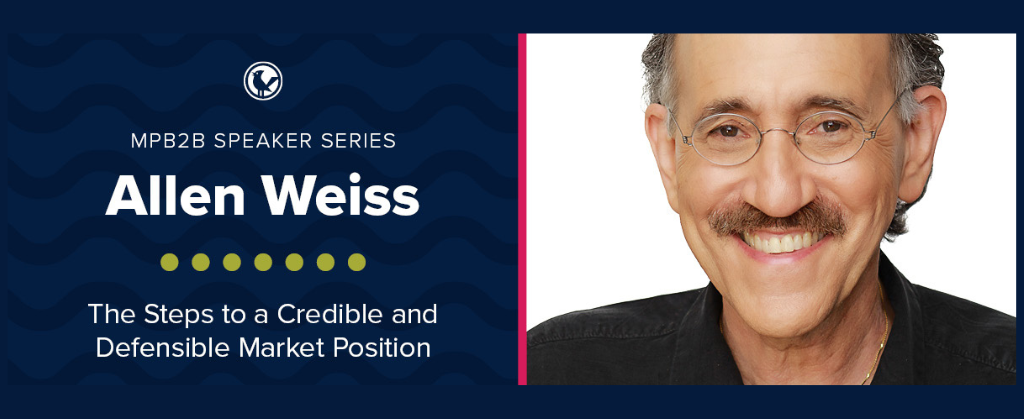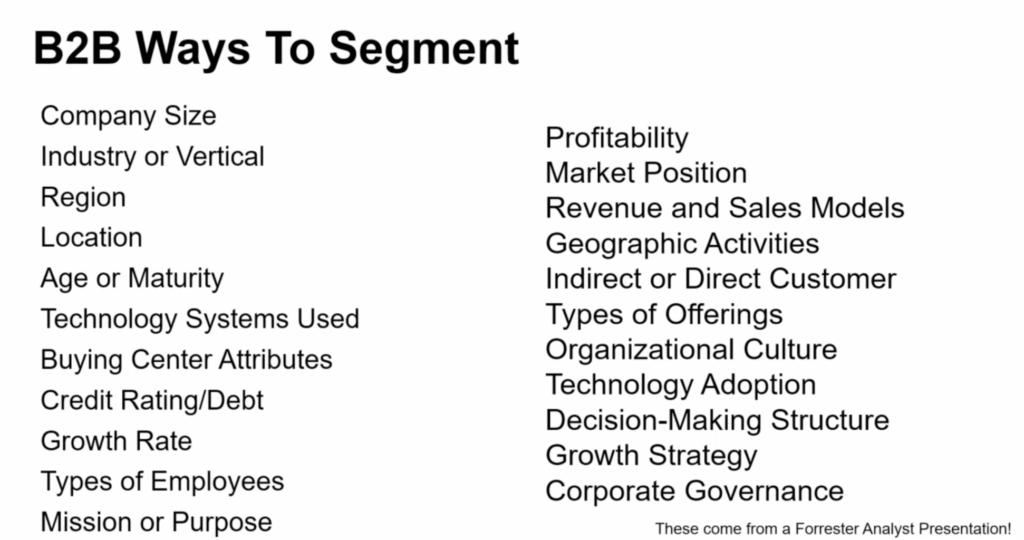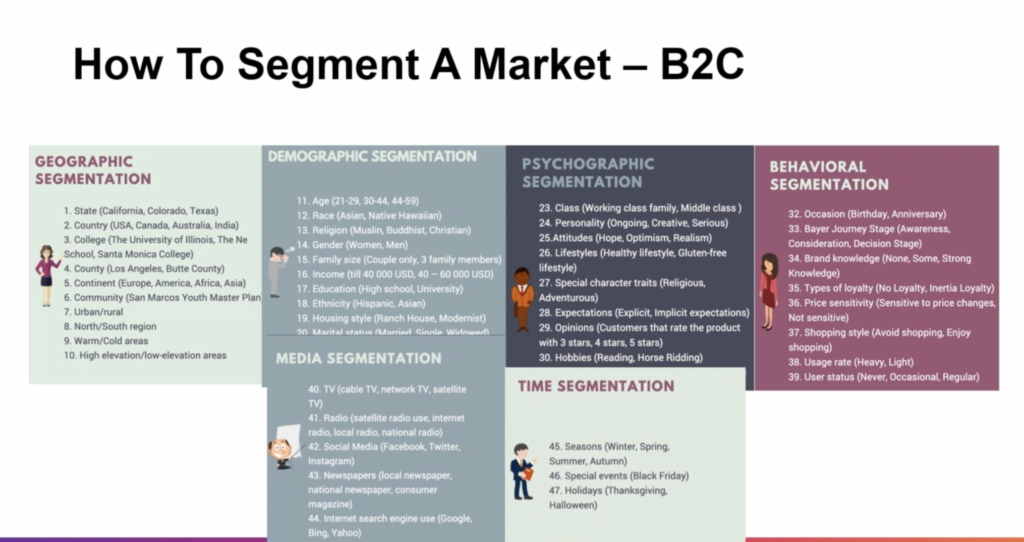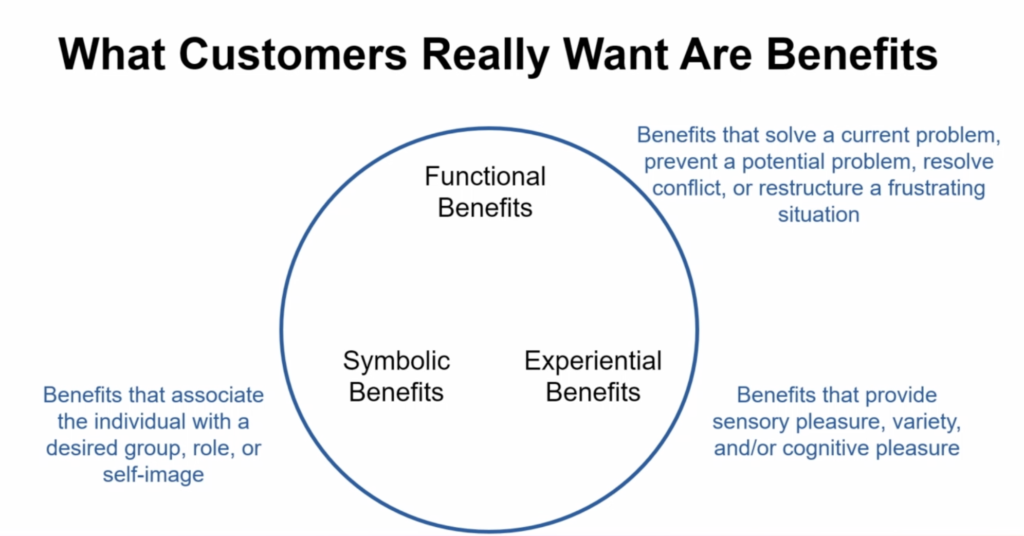
Market positioning is saying who your company can help—and who it can’t.
And to make your positioning work for you, Allen Weiss says, you have to understand the benefits your product or service provides to the customer.
For more on Allen’s positioning technique, watch the clip from Allen’s 2022 B2B Forum session or read the transcript below.
You need to segment your market.
And segmentation is really good to positioning.
In fact, if you don’t segment the market, you’re not really positioning it at all. So you need to segment the market. And that’s because not everybody wants what you’re selling.
So, how do you segment a market? This is really kind of the first thing to start thinking about.
I went to a Forester conference about five months ago. And I was really interested because one of the four analysts was gonna talk about segmentation. This was exactly what they put up here! They said basically, “here’s like 25 different ways to segment the market. You figure it out.”

And now you’re left there saying, “okay, what do I do? Do I do it on industry? Do I do it on company size? Maybe I should do it on profitability. Maybe I should do what types of offerings?…”
And this is why marketers get really confused.
You’re in B2B. But if you’re in B2C, these are the different ways that you can segment a market, right? So you can do it through geographic or demographics or psychographic or behavioral or media or time segmentation. So these [B2C] people are really confused.

I wanna make your life really easy, okay? And how can I make your life really easy? If you think back, you’ve probably seen Theodore Levit talk about this.
“People don’t wanna buy a quarter inch drill. They want a quarter inch hole.” That’s what he said.
In fact, he said something even more relevant to people who drive cars.
“Let’s start at the beginning: the customer. It could be shown that motorists strongly dislike the bother, delay, and experiences of buying gasoline.”
(Do you all like buying gasoline? You look like, oh boy, I get to go buy gasoline!)
“People actually do not buy gasoline. What they buy is the right to continue driving their cars.”
And what really, Theodore Levitt—who unfortunately died a number of years ago, he was a major management theorist at Harvard—and he talked about how a lot of companies didn’t understand what they were going through. A lot of companies disappeared. Industries disappeared.
He was the one who wrote about marketing myopia where the buggy whip industry… was taken over by the motorized vehicles. Well, people all see this and they go, “that’s nice.” But then they go off and they segment a market by geographic or verticals and all of that.
Some people, especially in B2B, say, “look, I really want pain. I want to find out what pain is.”
Customers don’t. Do you know any customers who want pain? They go, “wow, I’d really like more pain in my life.” No, that’s not the way to think about what’s going on in the market.
What you’re looking for are the benefits.
Let’s talk about what customers really want and what kind of benefits actually exist.
There’s actually three types of categories of benefits in the market.

The first one—and I think this is probably more relevant to all of you in B2B, ’cause [B2B] tends to be more [about] functional benefits. These are benefits that solve a current problem, or prevent a potential problem, or resolve conflict, or restructure a frustrating situation.
But in other markets, symbolic benefits are benefits that are associated with the individual, or a desired group, or even a role or a self-image.
And then there’s experiential benefits that provide sensory pleasure, variety, and a cognitive pleasure.
The brands that you really like, for example, the ones that you really admire provide all three of these.
For example, the iPhone. When it first came out, it had all three of these kinds of benefits, which is why the iPhone just kind of exploded and took off.
But as I say, in B2B markets, it tends to be a little bit more on the functional benefits.
So I’ll give you some examples of functional benefits.
Like one benefit would be: it’s reliable. It’s something that I would get you as a customer would say, “wow, it doesn’t break down and cause problems!” And so this is something that solves a problem or conserves resources.
Okay. Another one is: it’s easy to install. And I guess I’m using these words for install. ’cause I’ve done a lot of consulting with big technology companies and they’re trying to sell to customers where one of the problems is like, how do I install this thing? Well, if it’s easy to install, it doesn’t take time to get up [and running]. And as a result it conserves resources.
Published 8/16/23
B2B Forum is packed with marketing insights, strategies, and tactics taken from the real world experience of over forty industry experts, packaged into context you can actually put to use.
Join us in Boston for B2B Forum 2024 this coming November 12-14, 2024. Early buyers get B2B Forum tickets at their lowest rate, and discounted hotel rooms are available while they last.